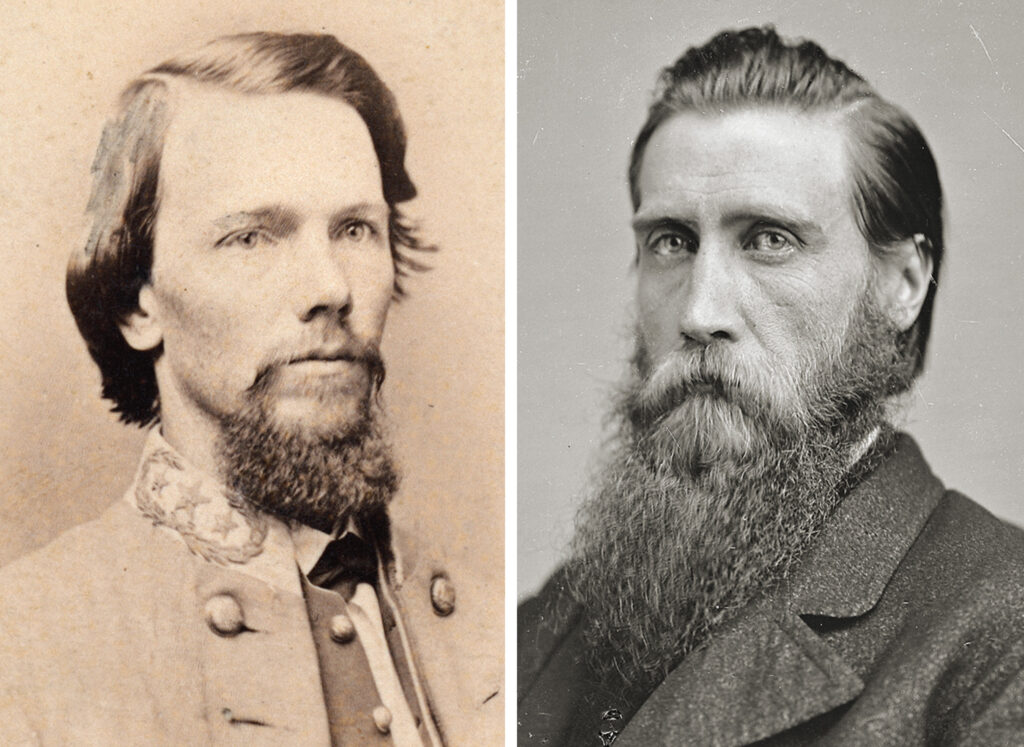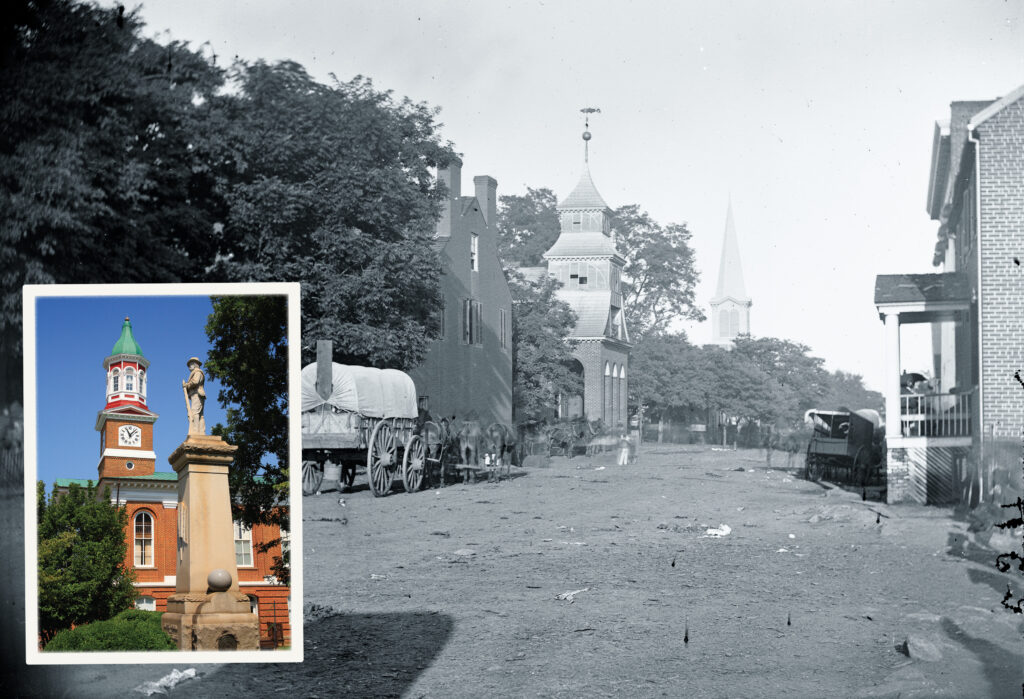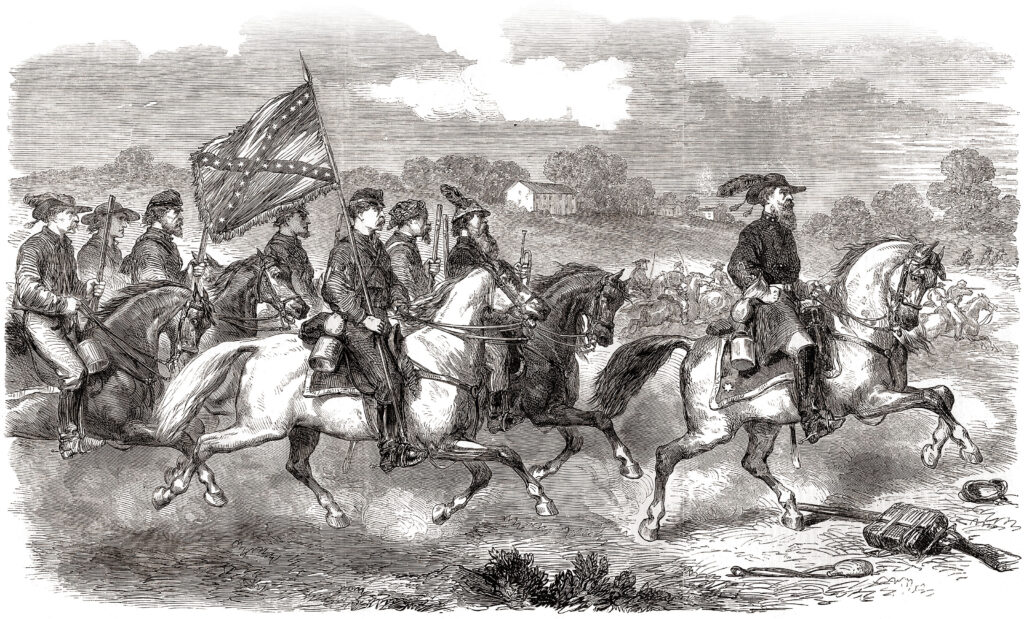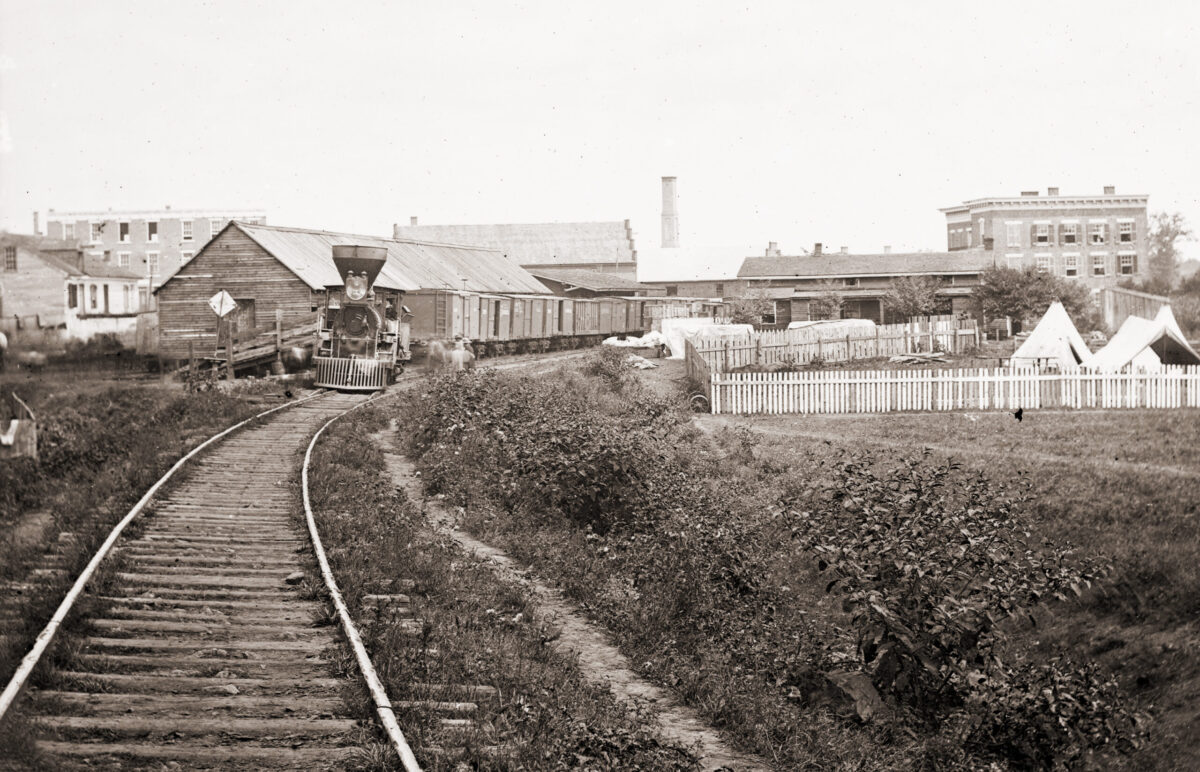In 2002, I ventured to Culpeper, Va., to satisfy a particular quest of mine: to explore the route that Brig. Gen. Evander Law’s Alabama Brigade, in Maj. Gen. John Bell Hood’s Division, undertook from Raccoon Ford to Gettysburg in June 1863. Hood’s command was present at the massive cavalry reviews that Maj. Gen. J.E.B. Stuart, the Army of Northern Virginia Cavalry Corps’ commander, conducted in the vicinity of Brandy Station on June 5 and 8.
Leaving the crass commercial sprawl of the I-95 corridor and Spotsylvania County, I traveled west on Virginia State Route 3 to the vast open space of Culpeper County. Since first visiting Culpeper in the early 1990s, I could not help but feel the county seat was a somewhat odd place, suffering perhaps from an identity crisis or cultural amnesia. It appeared to be a town lost in time, not knowing how to, or not interested in, capitalizing on heritage tourism. Although Culpeper was not unique, the song remained the same in many historic towns in Virginia and beyond. But Culpeper had been so significant in the war.
The town and surrounding area held a wealth of history that had not been tastefully capitalized on. Perhaps it was lofty idealism on my part, sprinkled with unreasonable economic considerations.
The architecture of Lt. Gen. A.P. Hill’s hometown was impressive and hopefully a future anchor for downtown redevelopment. One could see the potential of investing in history, especially in the wake of Ken Burns’ pop-culture phenomenon, The Civil War.
Just north and east of Culpeper is the battlefield of Brandy Station—known as the largest cavalry battle in the war (though folks heavily interested in the 1864 cavalry battle at Trevilian Station, Va., might argue otherwise). Of course, as many know, Brandy Station has the often-common layers of Civil War history—from Maj. Gen. John Pope’s 1862 Federal occupation to the massive 1863 battles, to the grand encampment of the Army of the Potomac, to nearby Kelly’s Ford, Rappahannock Station, Cedar Mountain, and so on. It is indeed a target-rich environment, as all these sites are within a few miles of each other.
Many modern preservation battles have been fought here as well. In the past 40 years, the county has been on the front-line of the see-saw preservation saga. Because Culpeper is located on the U.S. Route 29 highway—which provides a corridor for quicker ingress and egress, thus accommodating the growing Washington, D.C., regional commuting population movement in that direction—developers have long salivated over exploiting the area. Traditionally, many members of the Culpeper Board of Supervisors have not exactly gone out of their way to care for their historic pearl, as their voting records will attest.
Despite the constant development hurdles, much property has been protected through the yeoman service of long-term Culpeper–Brandy Station advocate Clark “Bud” Hall. The founder of the Brandy Station Foundation has fought much for the battlefield land around Culpeper —from thwarting a proposed Formula 1 racetrack in the mid-1990s to efforts by Southern California land developers looking to exploit and radically change the area.
Until 1987, not a single acre of Brandy Station had been saved. Since then, the Association for the Preservation of Civil War Sites (APCWS), which became the Civil War Trust (now the American Battlefield Trust), and others have saved 1,872 acres of the Brandy Station battlefield, including Fleetwood Hill, the site of J.E.B. Stuart’s headquarters and the epicenter of the battle. Because the battle was so massive, and substantially a cavalry fight, it covers a lot of ground—more than 10,000 acres.
The Brandy Station preservation issue begs reoccurring questions: How much land needs to be saved? Why should it be saved? How does one quantify preservation? Who benefits from it? Time is dwindling to save this vast historic and natural area from the advancing Washington, D.C., commuter traffic and population. The area is indeed fragile.
On my 2002 trip to Culpeper, many of the historic sites were threatened, and I was concerned I perhaps would never get to see them. Yet my schedule dictated a fast pace, negating extensive exploration—always a big draw when traveling into history in the Old Dominion. My focus this time was on Law’s Yellowhammer Brigade in June 1863 at Brandy Station.
A Massive Mounted Force
Law’s Brigade camped with John Bell Hood’s Division southeast of Culpeper, near Pony Mountain and paralleling the Fredericksburg Pike (modern-day Virginia Route 3), from June 5 through June 15.
A soldier in Hood’s Division wrote of the town: “Once more we stand with shattered walls of Culpeper, and again our line of operations points onward to the Potomac….Shaken by the shock of twenty battles, mutilated by four barbaric invasions, her sanctuaries defiled, devastated by pestilence and famine and the citizens driven from their hearths depending on God alone for food….”

In early June 1863, J.E.B. Stuart had assembled a force of 10,000 troopers around Culpeper. The size of a mounted force that large made me wonder about the forage and logistics of the horse and mule element of Lee’s army; it was a part of military strategy of which I often feel ignorant.
Peter Wellington Alexander, the popular partisan reporter from The Savannah Republican newspaper, would write about forage and logistics of equestrian sustenance while at Culpeper:
“The number of horses [and mules] in this army, including the cavalry, artillery, quartermaster’s department, and field and staff, is not far from 35,000….To supply these horses with the usual rations of corn and hay, would require 7,500 bushels or 420,000 pounds of the former and 490,000 pounds of the latter, per day. The labor and expense of supplying so large a quantity of forage are necessarily very heavy.
“Fortunately for us, as well as for the horses, neither army has occupied this part of the State since last fall, and consequently the supply of grass, clover and timothy is abundant, otherwise it would be impossible to subsist so many animals with our limited wagon and railroad transportation, and at a time of so much scarcity as the present. You will be surprised to hear, therefore, that the horses receive no hay at all, and very seldom and fodder, and only one third the usual ration of corn. And yet I have never seen them in better condition.
“It is reported that the grazing in the counties between the Rappahannock and the Upper Potomac is equally as good as it is in this vicinity. Many of the farms have been abandoned, and much of the fencing destroyed, but it is believed that the supply of grass, though not as abundant as in times of peace, is ample for our wants, should the army advance. The farmers are allowed ten cents per day for the grazing of each horse, which would make the total cost of grazing 35,000 horses, $3,500 per day.”
That account underlines the logic of necessity for Lee to move his army to another region to survive. I have often overshadowed the Confederate desire for supplies as a major reason for their movement north in 1863; however, the mathematical logic illustrated by Alexander’s account partially illuminates the hard realities of supply and logistics.

On June 5, and three days later, Stuart conducted massive cavalry reviews near Culpeper. Hood’s Division attended both events; General Robert E. Lee attended the latter.
A Southern soldier-reporter in Hood’s Division said of the June 5 equestrian spectacle: “It was an imposing sight. One hundred and forty-four companies passed in review in the most splendid order. I counted twenty-six stands of colors, exclusive of those belonging to Stuart’s horse-artillery. After the review there was a sham fight, in which the artillery fired over one hundred and sixty rounds, and the cavalry made several brilliant charges. The horses were generally good, and everything indicated a good degree of discipline. Many ladies, blooming in health and beauty, were present. Gen. Hood marched his whole division out to witness the review.”
Such accounts always spur my imagination and whet my appetite to travel back in time. It is hard to fathom what 10,000 cavalrymen would look like thundering ahead. To what can we truly compare the sound of 40,000 charging hooves?
“On the 8th of June General Lee ordered a review of the whole of General Stuart’s Corps,” recalled Robert T. Cole, the 4th Alabama’s adjutant. “The 4th…was present and witnessed the grandest and most spectacular display of the largest body of cavalry they had ever seen massed on one field. General Stuart was in all his glory. Mr. Davis, his cabinet, and a large number of ladies from Richmond and the surrounding country were among the spectators.”
Wrote one of Hood’s infantrymen: “Yesterday we had a great review. Thousands of cavalry and infantry were upon the ground. The infantry rested on their arms and the cavalry pranced and maneuvered over the field to the delight of about 500 young and thoughtless beauties. The cavalry looked fine with the Prince of showy men at their head, dressed with gold and yellow trappings glistening on the plain grey surface like fire-flies on a darkening night. They were essentially a collection of pretty men, dressed in their best, while the poor, tattered, worn and tired infantry received not one smile from the light-hearted beauties who were out on that day….The cavalry parade was a beautiful sight, but I have no patience for such tomfooleries.”
I could relate somewhat to that soldier’s words; in my reenacting days, the grimy, hardcore, authentic types rarely got the attention of the fairer sex—but the cavalry did, especially if they wore “glittery” things.
“A Sham Battle”
Alexander, usually writing under the acronym “PWA”, was a notorious Stuart critic. On June 8 he penned an article that would appear in the June 15 Savannah Republican, declaring: “Gen. Stuart has assembled a heavy cavalry force here….Some of the ladies adorned him and his horse with flowers, and in this condition he presented himself to General Lee, who, it is reported, having surveyed him from head to foot, quietly remarked: ‘Do you know General, that Burnside left Washington in like trim for the first battle of Manassas. I hope your fate may not be like his.’ Unfortunately, Stuart was too much occupied with his flowers to take the hint.”
That evening, observed Cole, “General Stuart entertained his visitors with a sham battle. To several members of the 4th Alabama there was only one thing to mar the occasion—the absence of the dashing Alabama artillerist of Stuart’s Horse Artillery, John Pelham, who was killed leading a cavalry charge [at Kelly’s Ford] only a few miles from where we then were, on the 17th of March 1863.”
Continued Cole: “That night the little village of Culpeper was filled to overflowing with beautiful women and brave men, where a dance…inaugurated by the cavalry continued until long after we infantry had retired…”

Early the next morning, true fighting broke out at Brandy Station, although Hood’s Division was held back in a concealed support position near Pony Mountain. Although the Federal horsemen were repelled after a hard-fought clash, Lee’s troop concentration at Culpeper had been revealed. Wrote Alexander: “Lee’s flank movement, like a coal of fire on the terrapin’s back, has had the effect to put [Hooker’s Army of the Potomac] in motion….”
The Gettysburg Campaign had begun.
Visiting Culpeper last October, I was struck by the new sense of community building with a historic bent. As I drove by the nearby fields of Brandy Station, it felt good to know much is now protected and that a new state park incorporating neighboring Brandy Station and Cedar Mountain is being developed. It’s the kind of development I love to see. I thought of Bud Hall, whose incredible efforts over the years have helped bring this park to fruition. Without him, so much would have been lost, denying me and others the opportunity to easily imagine the historic events that had transpired there, such as those glamorous Confederate cavalry reviews of June 5 and 8.






